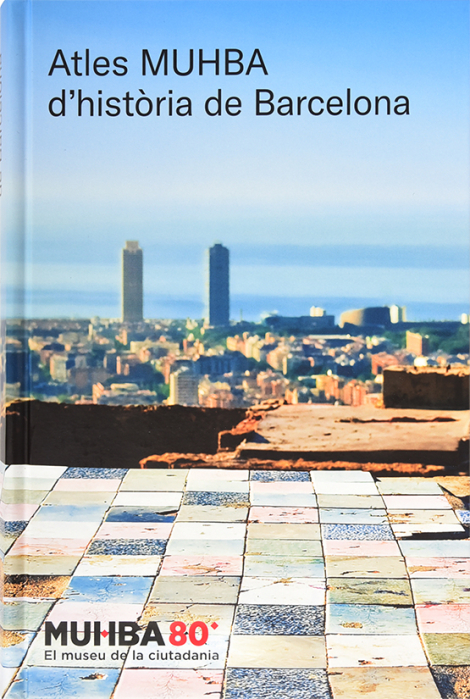Two thousand years of Barcelona on the map
- Books
- Culture Folder
- Oct 23
- 4 mins
The Atles MUHBA d’història de Barcelona [MUHBA Atlas of Barcelona History], published by Barcelona City Council and the Museu d’Història de Barcelona (MUHBA) – an institution that is celebrating its 80th anniversary this year –, is impressive on account of its volume and rigorousness, worthy of a Roman ashlar. Just one glance at it reveals that, in reality, it is an absorbent, porous work, full of compartments, where everyone can feel at ease: from the most erudite reader to the curious viewer who comes to its pages in search of small, everyday stories.
The book naturally combines the rigour of experts’ articles in specific periods and fields – Borja de Riquer, Francesc Vilanova, Mercè Tatjer, Oriol Nel·lo, among others, to complete a list of 25 specialists –, and the use of graphics that help to make the theory more comprehensible. Particularly interesting are the cartographies of the city’s evolution, the so-called Carta històrica [Historical Charter], a succession of maps that cover the period from when Barcino was a small Roman settlement, situated around Mount Táber, to recent times, with the city having become a metropolitan area. The maps themselves, with their brief explanations, are capable of narrating the city’s history through its urban growth.
The book naturally combines the rigour of experts’ articles in specific periods and fields and the use of graphics that help to make the theory more comprehensible.
 Cover of Atlas Muhba
Cover of Atlas MuhbaAnna Oswaldo Cruz’s photographic depictions of the landscapes of present-day Barcelona are particularly noteworthy, illustrating, quite explicitly, the city’s historical legacy. And they succeed in doing so without indulging in the narcissistic “picture postcards” to which we are accustomed in many popular history books. Besides photos of the Roman wall, the Jewish quarter and Plaça de Ramon Berenguer el Gran, the reader will find, for example, portraits of the Can Peguera fountain – the cluster of cheap housing inaugurated in 1929 under the name of Ramon Albó – or the blocks of flats in Canyelles. Both are located in Nou Barris, one of the districts traditionally overlooked by “official” historiography.
The publication is in keeping with the philosophy of the exhibition Barcelona Flashback: A History Kit in 100 Objects, which opened in 2019 at Casa Padellàs. The objects displayed – often everyday, basic, even banal ones in some cases – question the visitor and provide them with answers to help them discover the past and understand the present. Because history cannot be explained only through the majestic buildings of the ruling classes, grand monuments and masterpieces, and major infrastructures. Sometimes, a humble object is capable of encapsulating an entire epoch: a small stamp for printing calicos; a copy of Candel’s book Els altres catalans [The Other Catalans]; a poster for the demonstration “Aturem la guerra contra l’Iraq” (Let’s stop the war against Iraq)…
The Atles, which reviews two thousand years of Barcelona’s history, aims to afford a special space to recent history: the second part of the book delves into seven thematic areas that were significant throughout the twentieth century. It thus deals with a part of the past that many readers have experienced directly, because they have lived through it, or indirectly, through the testimonies of their parents or grandparents. In some passages, moreover, groups that, until very recently, historiography had overlooked, have been incorporated as historical agents in their own right. For instance, the local residents who, at the end of the Franco dictatorship, became a driving force for change, not only for the city’s physiognomy – many of the urban reforms of the 1970s and later were the result of neighbourhood struggles –, but also as an agent of democratisation.
“All through the years of the museum’s transformation,” explains Joan Roca i Albert, director of the MUHBA and editor of the Atles, “there has been a constant dialogue with neighbourhoods and citizens’ organisations, universities and many international institutions. This polycentric structure is conducive to a symphony of multilayered urban history”. This multifaceted view that characterises the Atles is what makes it interesting and, more than anything, useful. And it makes it a work of reference that has come to stay on the bookshelf for a long time. Perhaps not as long as a Roman ashlar, but for a long while.
Atles MUHBA d’història de Barcelona
Joan Roca i Albert (book editor)
Barcelona City Council and MUHBA, 2023. 504 pages
The newsletter
Subscribe to our newsletter to keep up to date with Barcelona Metròpolis' new developments




